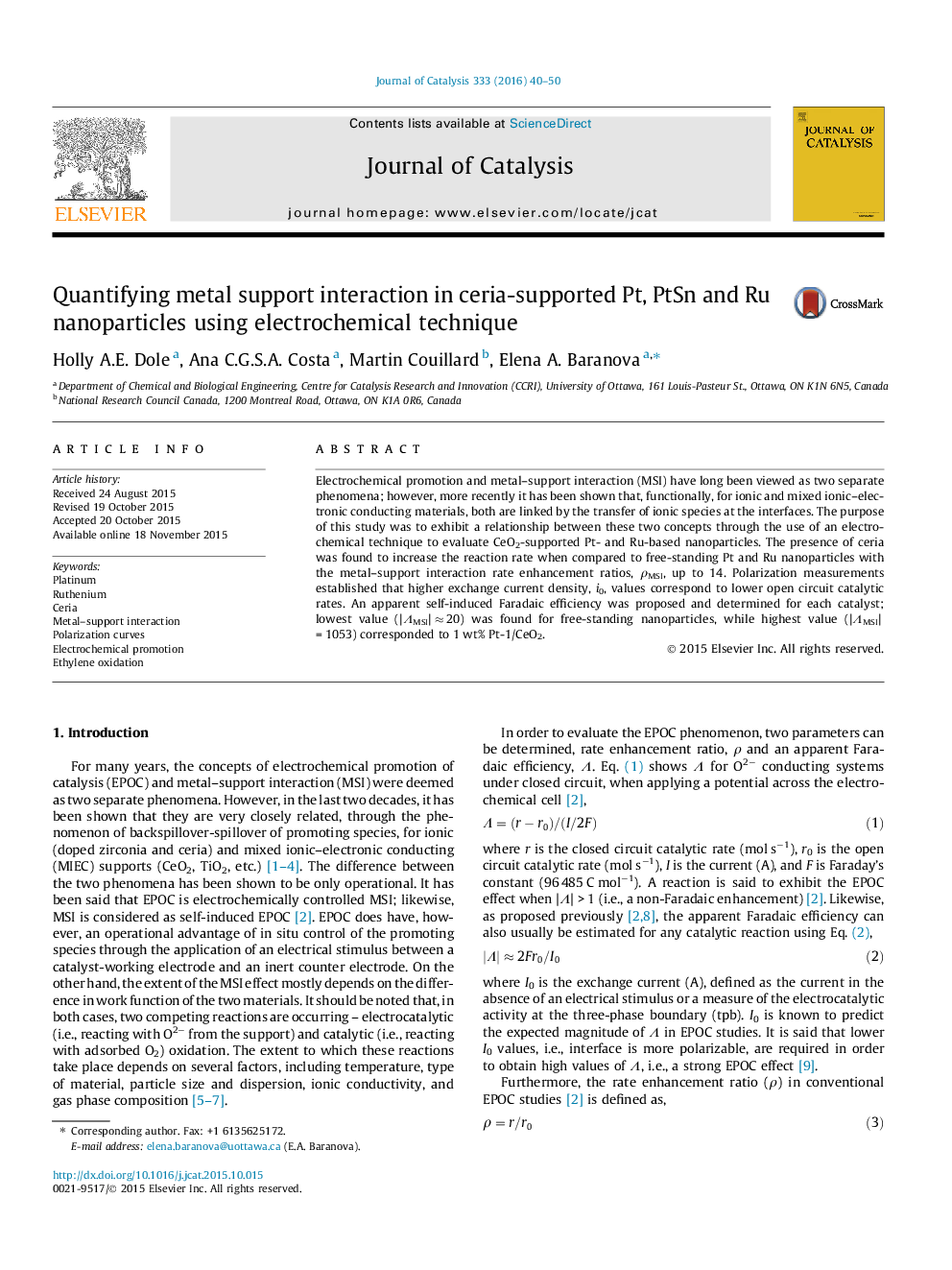| Article ID | Journal | Published Year | Pages | File Type |
|---|---|---|---|---|
| 60655 | Journal of Catalysis | 2016 | 11 Pages |
•Pt- and Ru-based nanoparticles were deposited on CeO2 interfaced with YSZ.•Combination of open circuit and electrochemical measurements was conducted.•CeO2 was shown to play a significant role in increasing the catalytic activity.•Addition of Sn to Pt was shown to help in promoting the catalytic activity.•Self-induced Faradaic efficiency was proposed to quantify MSI effect.
Electrochemical promotion and metal–support interaction (MSI) have long been viewed as two separate phenomena; however, more recently it has been shown that, functionally, for ionic and mixed ionic–electronic conducting materials, both are linked by the transfer of ionic species at the interfaces. The purpose of this study was to exhibit a relationship between these two concepts through the use of an electrochemical technique to evaluate CeO2-supported Pt- and Ru-based nanoparticles. The presence of ceria was found to increase the reaction rate when compared to free-standing Pt and Ru nanoparticles with the metal–support interaction rate enhancement ratios, ρMSI, up to 14. Polarization measurements established that higher exchange current density, i0, values correspond to lower open circuit catalytic rates. An apparent self-induced Faradaic efficiency was proposed and determined for each catalyst; lowest value (|ΛMSI| ≈ 20) was found for free-standing nanoparticles, while highest value (|ΛMSI| = 1053) corresponded to 1 wt% Pt-1/CeO2.
Graphical abstractFigure optionsDownload full-size imageDownload high-quality image (261 K)Download as PowerPoint slide
